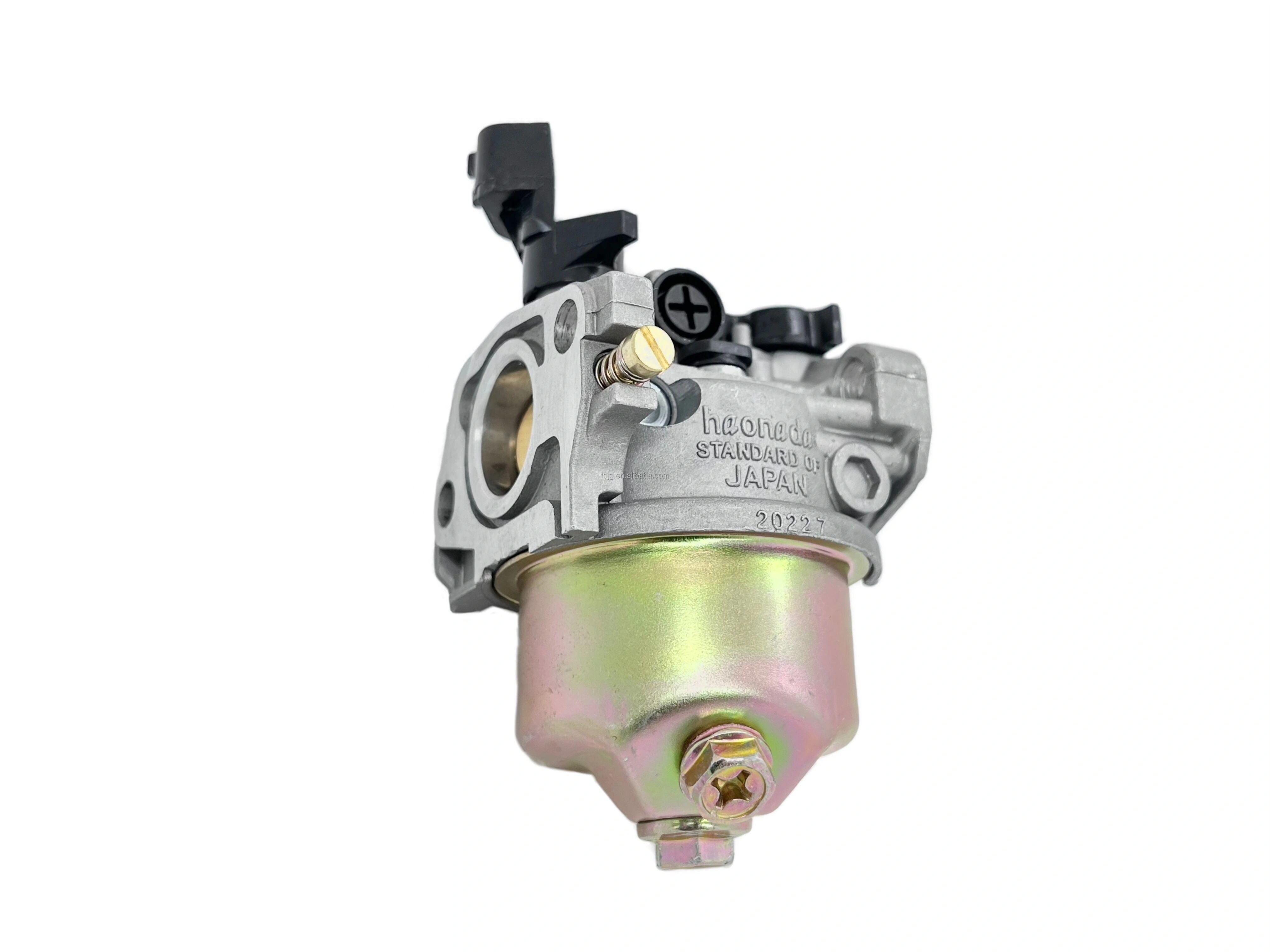Keeping Your Lawn Mower Running Smoothly
Every lawn owner knows the satisfaction of a perfectly mowed yard, yet even the best-maintained machines can fall into trouble if critical components begin to fail. One such component is the carburetor, which plays a vital role in ensuring the engine receives the ideal mixture of air and fuel. When this part shows signs of degradation, overall performance drops significantly. A proper carburetor can mean the difference between an engine that powers smoothly and one that sputters, wastes fuel, or even fails prematurely. Recognizing early signs of carburetor failure is essential for saving money and avoiding the frustration of an unreliable lawn mower.
Recognizing Performance Issues in Your Engine
Inconsistent Engine Idle and Power Fluctuations
A well-calibrated carburetor provides a stable idle and consistent power output. Over time, however, wear or buildup in the carburetor can cause the engine to idle erratically or fluctuate in power. Have you noticed that your lawn mower sometimes hesitates at the start or unexpectedly surges while in use? These symptoms may indicate that the carburetor is no longer delivering the correct air-to-fuel ratio, resulting in uneven combustion. As a result, the engine struggles to maintain a constant speed, affecting not only mowing quality but also overall fuel efficiency and longevity.
Even small disruptions in the air-fuel mixture can lead to noticeable performance issues over extended periods of use. When the engine does not idle correctly, it often leads to stalling and erratic performance under load. Over time, these disruptions can increase mechanical stress on other engine parts, ultimately decreasing engine life if not addressed promptly.
Signs of Carburetor Wear and Contamination
Excessive Carbon Buildup and Deposits
Over time, the internal components of a carburetor can accumulate carbon deposits from incomplete fuel combustion. These deposits gradually clog the carburetor’s jets and air passages, interfering with the smooth flow of the air-fuel mixture. Do you sometimes see a dark, sooty residue forming around the carburetor assembly? Excessive carbon buildup is a clear sign that the carburetor is struggling to maintain an optimal mixture, which can lead to engine misfires and a decline in power output.
Even a slight buildup can have significant effects. Carbon deposits not only block fuel flow but can also affect the movement of the throttle valve. When the throttle cannot open properly due to residue, the engine loses its ability to adjust to speed changes effectively. This accumulation is often accelerated by poor-quality fuel or operating the lawn mower without adequate maintenance practices.
Fuel Contamination and Residual Gunk
In addition to carbon deposits, the presence of varnish or residue from old fuel can significantly impair carburetor performance. If the fuel has been sitting idle for too long or if fuel stabilizers were not used, sludge can form inside the carburetor. This residue further disrupts the ideal air-to-fuel mixture, causing the engine to run lean or rich. Over time, this imbalance can lead to more serious issues, including excessive engine wear or even total engine failure.
Residue within the carburetor can cause blockages in the small orifices that regulate fuel flow. This reduction in fuel delivery results in a drop in engine performance and can cause the engine to sputter or stall. Recognizing the early signs of fuel contamination is crucial. Regular fuel replacement and proper storage practices help minimize these risks, but persistent issues may necessitate a complete carburetor replacement.
Evaluating Engine Performance Degradation
Increased Fuel Consumption Without Power Gains
A worn carburetor often leads to a significant increase in fuel consumption without delivering a corresponding boost in power. When the carburetor becomes clogged or misadjusted, the engine does not burn fuel efficiently, leading to wasted energy and increased operating costs. Have you noticed that you need to refuel your lawn mower more frequently even though your mowing hours remain the same? This inefficiency is a common symptom of carburetor decline.
Consistently high fuel consumption not only affects operating costs but also indicates that the engine is not performing optimally. When fuel is not burned completely, the resulting by-products can further damage the engine over time. Maintaining an efficient carburetor is therefore essential for ensuring that every drop of fuel contributes effectively to engine output.
Notable Changes in Exhaust Emissions
One of the less obvious indicators of carburetor issues is a change in the color or smell of the exhaust. A properly functioning engine typically emits a light, neutral-colored exhaust. However, when the carburetor fails to maintain the correct air-fuel ratio, the engine may produce darker smoke or unusual odors from incomplete combustion. This change in emissions is a clear sign that the carburetor is no longer operating at peak performance, and it may lead to further engine problems if left unaddressed.
Unburned fuel particles in the exhaust can contribute to an accumulation of deposits in the engine's internals, exacerbating wear and reducing overall performance. Over time, these deposits increase the likelihood of engine stalling and other malfunctions, underscoring the importance of a well-maintained carburetor.

Identifying Physical Wear and Damage
Cracked or Warped Carburetor Bodies
Visual inspection is often the first step in determining if a carburetor needs replacement. The body of the carburetor, if cracked or warped, indicates a decline in structural integrity, which compromises its ability to function properly. Any physical damage can lead to fuel leaks, inaccurate fuel metering, or a complete failure of the component. Periodic inspection of the carburetor body should be part of regular maintenance to catch these issues early.
Physical wear can be accelerated by exposure to extreme temperatures or prolonged use. A compromised carburetor body affects the ability of the entire assembly to maintain a sealed environment, leading to air leaks and a disturbed fuel mixture. Correcting these issues promptly can prevent further damage to the engine and help maintain overall system performance.
Loose or Damaged Linkages and Mountings
The smooth operation of a carburetor depends on the integrity of its mounting and control linkages. Over time, the mechanical connections that allow the throttle to regulate fuel flow may become loose or worn. If the linkages are damaged, the carburetor may not respond correctly to throttle input, leading to erratic engine behavior. Inspecting these components regularly can reveal signs of wear that might indicate the need for replacement.
Worn or loose linkages can cause a delayed or insufficient response, impacting the engine’s performance under various loads. Even if the carburetor's internal mechanisms are intact, compromised external components affect its overall efficiency. Ensuring that these parts remain secure and properly aligned is critical for maintaining engine power output.
Benefits of Replacing a Faulty Carburetor
Enhanced Engine Efficiency and Power Output
Replacing a failing carburetor restores the balance of the air-fuel mixture, ensuring efficient combustion. A new, high-quality carburetor can rejuvenate an engine, allowing it to produce more power with less fuel. For many users, the immediate gains in performance and fuel economy justify the investment. Upgrading to a modern carburetor often results in a smoother, more responsive engine, enhancing overall satisfaction with the machine’s operation.
Restoring proper fuel delivery not only boosts power output but also reduces the production of harmful deposits within the engine. This clean combustion process helps prolong engine life by minimizing wear on internal components, ultimately resulting in lower maintenance costs and fewer breakdowns over time.
Improved Reliability and Reduced Maintenance Effort
A high-quality carburetor that is properly maintained or replaced ensures that the generator or lawn mower remains reliable under demanding conditions. By eliminating the inconsistencies caused by an aging carburetor, you decrease the likelihood of sudden engine stalls, hard starts, or other performance issues. This consistency is particularly valuable in situations where the machine is needed for time-sensitive tasks.
Reliability is closely tied to maintenance intervals; a new carburetor typically reduces the frequency of required tune-ups and cleaning sessions. Fewer breakdowns mean less downtime and more consistent performance, both of which contribute positively to the user experience.
Factors to Consider When Replacing Your Carburetor
Compatibility and Correct Sizing
It is crucial to ensure that the replacement carburetor matches the specifications of your engine. Engine displacement, fuel delivery requirements, and mounting configurations vary across different models. Using an incompatible carburetor can lead to performance issues, even if the new part is of high quality. Consult your engine manual or manufacturer guidelines to determine the exact specifications required.
Correct sizing ensures that the new carburetor can deliver the appropriate air-fuel mixture at all times. A proper fit minimizes the risk of leaks, erratic throttle response, or insufficient fuel flow—all of which can detract from engine performance and longevity.
Evaluating Aftermarket Versus OEM Options
When it comes time to replace the carburetor, many options are available on the market. Aftermarket carburetors can offer performance enhancements and sometimes improved fuel efficiency compared to their OEM counterparts. However, choosing an OEM replacement guarantees a fit that meets the original design specifications, providing confidence that the engine will operate as intended.
Assessing the trade-offs between cost and performance, as well as long-term reliability, is essential. In some cases, an aftermarket model designed for a particular engine type can deliver noticeable gains in power output without compromising overall engine integrity. On the other hand, OEM parts are preferred by those who value consistency and manufacturer support.
The Long-Term Value of a High-Quality Carburetor
Cost Savings Through Improved Fuel Efficiency
A new, high-quality carburetor can significantly enhance fuel efficiency, saving money over the long term. Improved combustion means that each tank of fuel is used more effectively, reducing the frequency of refueling. This efficiency translates into tangible cost savings, particularly for users who rely on their equipment for extended periods or under heavy load conditions.
Better fuel economy also means that the engine operates more cleanly, with less unburned fuel contributing to deposit buildup. This not only extends the engine life but also lowers maintenance costs and improves overall reliability.
Extending Engine Life and Performance Consistency
Investing in a top-tier carburetor has long-term benefits that go beyond immediate performance gains. Consistent and complete combustion keeps the engine’s internal components cleaner and reduces mechanical wear over time. Users notice sustained performance improvements, even after many hours of operation, as the engine continues to run as efficiently as when it was new.
Lower engine wear means fewer costly repairs or replacements down the road. For both commercial and residential users, prolonging engine life translates directly into lower total cost of ownership and a higher return on investment.
Table of Contents
- Keeping Your Lawn Mower Running Smoothly
- Recognizing Performance Issues in Your Engine
- Signs of Carburetor Wear and Contamination
- Evaluating Engine Performance Degradation
- Identifying Physical Wear and Damage
- Benefits of Replacing a Faulty Carburetor
- Factors to Consider When Replacing Your Carburetor

